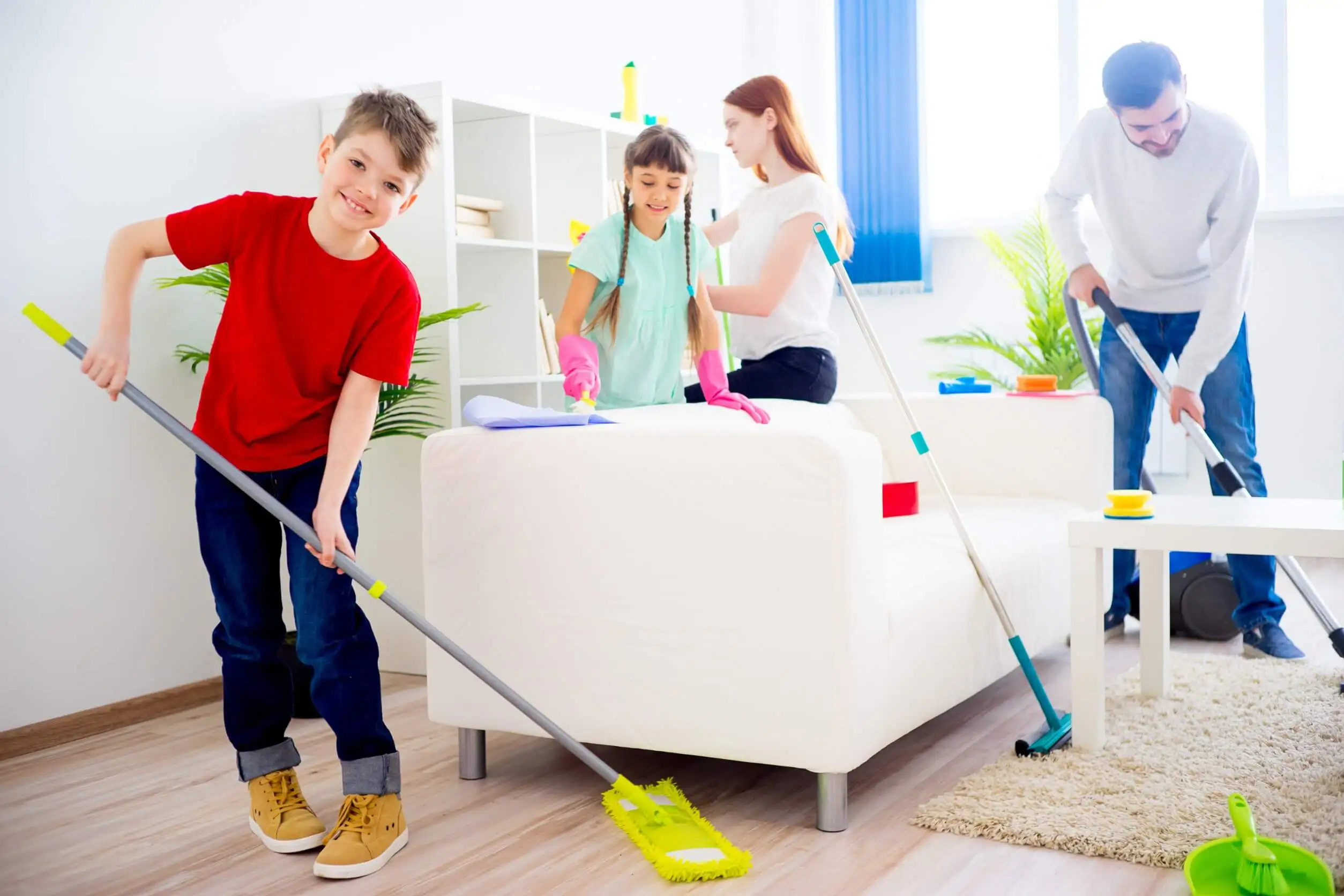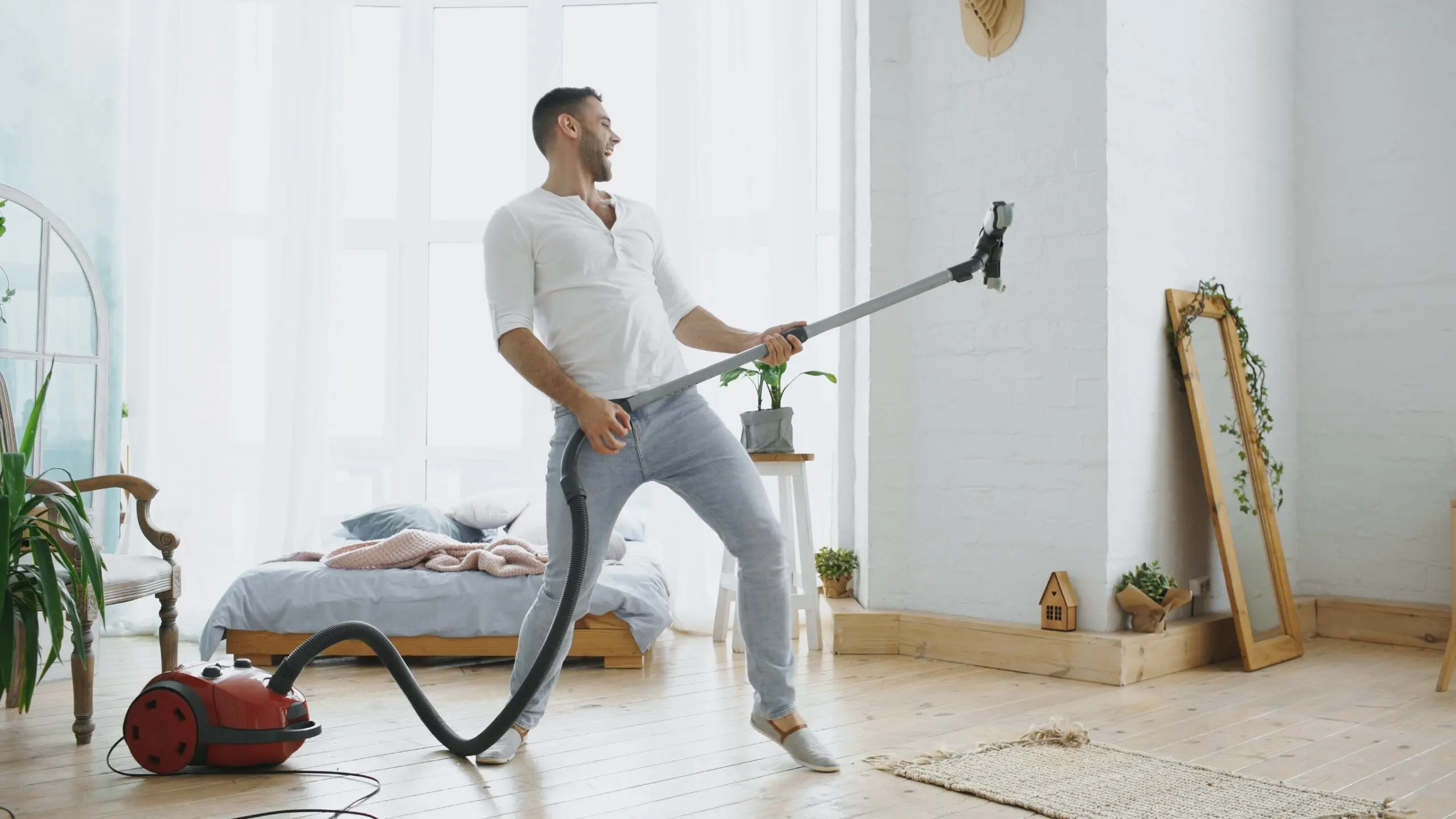What Is "Cleanliness" and How Can You Apply it to Your Home?

Far from being a burden, cleaning your house is actually useful to clear your mind. This is what cleanliness proposes, the trend that transforms household chores into a kind of treatment against stress.
The idea is to establish set routines instead of focusing on just a few days of deep cleaning, which sometimes generates anxiety and fatigue just by looking at the accumulated mess to be faced. Likewise, keeping your space organized and clean also contributes to your well-being.
This philosophy is closely linked to meditation, as it assumes that concentration on the task connects with the unconscious and leads to a state of deep tranquility. We’ll show you the ways to practice it and the advantages it brings.
What is true “cleanliness” all about?
Cleanliness proposes order and cleanliness as a form of treatment with the purpose of taking a break from the daily hustle and bustle. Science focuses on three aspects: full attention to the activity you’re doing to truly experience it, connect with reality, and relax in the process.
One of the theories it adheres to is that disorder in the home reflects the inner state of a person and influences their actions. If there is order, on the other hand, it’s easier for us to achieve our goals than it is in the midst of chaos.
According to a study by the Journal of Environmental Psychology, the overabundance of possessions in the home creates chaotic living spaces, which negatively impacts our subjective well-being.
Based on this, the method emphasizes the feeling of serenity that organized environments convey. In addition, by keeping the house uncluttered, you perceive emotional, physical, and mental harmony.
Similar to the mindfulness movement, the cleanliness movement pursues peace through domestic cleanliness.
The benefits of the practice of cleanliness

We think you may also enjoy reading this article: Eco Friendly Methods to Clean and Disinfect the Fridge
As suggested by the organizational consultant Marie Kondo ®, a lack of order in a house leads to a life in the same conditions. The practice of cleanliness provides benefits that transcend neatness and lead to wholeness. Let’s take a look at them below.
- Integration: The whole family can participate in the task and get involved in the methodology, which will reduce the time spent on each task.
- Focus: When you concentrate on a task, you forget external pressure. Cleanliness is all about putting all of your attention on the task at hand while leaving out other thoughts.
- Motivation: If each task is carried out with intentionality, the outcome will be better. For example, cleaning the windows will make the light come in better. Meanwhile, changing the sheets and scenting the room are two actions that contribute to a better quality of sleep.
- Quality of life: Having a neat and tidy space is very healthy. It also leaves us with more time to take care of ourselves more, take care of our image, and even eat better. In fact, research published by Environment and Behavior determined that chaotic kitchens influence out-of-control mentalities, making people opt for unhealthy food.
- Tranquility: Unwinding in organized environments produces pleasure, clarity, and peace. Buddhist monks support this assessment, linking their simple, habitual tasks with tranquility. As the Buddhist Monk’s Cleaning Manual mentions, one cleans not because one is dirty or untidy, but to free one’s spirit from disturbing shadows.
- Self-discipline: Practicing this philosophy encourages planning and discipline because achieving total order and cleanliness of the house is difficult in a single day. The Universidad Panamericana points out that a disciplined person works focused on a certain task until it is accomplished; with this objective, they advise setting priorities, preventing interruptions, and focusing on your goals.
How to apply meditative cleanliness in your home
Simple actions such as opening windows to let sunlight and fresh air in is one way to implement meditative cleanliness. Some habits that support the trend are mentioned below.
Pay attention when cleaning and tidying
During cleanliness, keep all 5 senses alert. A publication from the University of Murcia states that attention increases receptivity to events in the environment, focuses the mind, and allows you to carry out multiple activities efficiently.
This is what mindful cleaning is all about: being attentive to what you do to avoid stressful situations. Although washing dishes, dusting, or tidying the closet may seem like simple tasks, make sure to dedicate a lot of care to them.
Create routines

Guidelines adjusted to the rhythm of your life are essential. It’s not essential that you do all the tasks in one day; on the contrary, this is almost impossible. The best thing to do would be to plan daily or weekly activities in which you specify both the task and the time when you will do it.
Keeping your furniture and belongings tidy is a very good daily routine; making the bed as soon as you get up is one, too. Deep cleanings are more of a weekly, biweekly, or monthly routine because they involve more work and, consequently, more time.
Make projects comfortable, especially when the whole family is involved. The American Academy of Pediatrics claims that if routines are uncomfortable, they lead to inefficiency, imbalance, and disorder.
Support your routine with technology
Robots that assist in cleaning by vacuuming, sweeping, and polishing collaborate with the practice of cleanliness. The goal is to make the process easier until you find it enjoyable. Cutting-edge appliances aren’t the only things that are useful in this sense; a simple washing machine or dishwasher, among other appliances, can all make your life easier and make cleaning more enjoyable.
Delegate responsibilities
According to the ages of your family group, distribute the workload. Also, take into account everyone’s interest in participating. Picking up the laundry, tidying up the toys, and watering the plants are some recommendations to occupy the children; heavy or risky tasks are best left in adult hands.
Don’t demand too much of yourself
Forget extremism: what you’re looking for is to build habits, not to make everything perfect. Being patient, enjoying the process, and understanding that order and cleanliness favor harmony contribute to the process. If you demand too much of yourself, you could collapse, feel anxious and not get good results.
Opt for the natural whenever possible
For meditative cleansing, it’s best not to use chemicals; preferably use products made with natural ingredients because they eliminate the possibility of inhaling harmful substances and do not pollute the environment. Aromatherapy, essential oils, and recipes for homemade cleansers bring positive vibes to this mission and have relaxing effects.
Set rewards
Imagine the reward at the end of the day. Snacking, watching TV, or listening to music are rewards you’ll enjoy at your leisure in a clean and organized space.
Like this article? We think you may also enjoy reading: How to Clean Reusable Water Bottles and How Often to Clean Them
Beware! Cleanliness does not require being obsessive about cleaning
Meditative cleaning is not about developing a compulsion for the process, but about seeing chores as an opportunity to detach from external factors and lower the intensity of an overwhelming life.
In short, this philosophy requires planning, patience, and mindfulness. Also, you can take it on as a domestic sport that keeps the home organized and benefits physical and emotional health.
All cited sources were thoroughly reviewed by our team to ensure their quality, reliability, currency, and validity. The bibliography of this article was considered reliable and of academic or scientific accuracy.
- Ferrari J, Peter Jurkat M, Roster C. El lado oscuro del hogar: evaluación del “desorden” de posesión sobre el bienestar subjetivo. Revista de Psicología Ambiental. Vol. 46. pp. 32-41. Reino Unido; 2016. https://www.sciencedirect.com/science/article/abs/pii/S0272494416300159
- García Sevilla J. Desarrollo Saludable: aportaciones desde la psicología. Universidad de Murcia. España. https://www.um.es/sabio/docs-cmsweb/aulademayores/texto._la_importancia_de_la_atencion.pdf
- Kernan K, Vartanian L, Wansink B. Desorden, caos y consumo excesivo: el papel de la mentalidad en entornos alimentarios estresantes y caóticos. Environment and Behavior. Vol. 49. Núm. 2. Estados Unidos; 2016. https://journals.sagepub.com/doi/abs/10.1177/0013916516628178
- La importancia de las rutinas en las familias. Academia Estadounidense de Pediatría. Estados Unidos; 2020. https://www.healthychildren.org/Spanish/family-life/family-dynamics/Paginas/the-importance-of-family-routines.aspx
- La importancia de planificar para lograr los objetivos. Universidad Panamericana. México; 2017. https://blog.up.edu.mx/prepaup/planificar-planear-para-lograr-tus-objetivos
- Matsumoto K. Manual de limpieza de un monje budista. Duomo Ediciones. https://www.duomoediciones.com/libro/manual-de-limpieza-de-un-monje-budista/
This text is provided for informational purposes only and does not replace consultation with a professional. If in doubt, consult your specialist.








